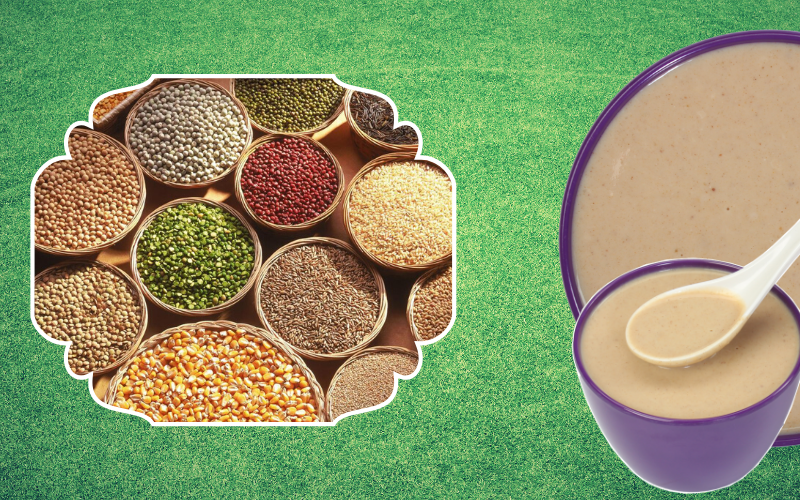Which is better Oats or Millet?
Oats and Millet - Overview
Oats and Millets are grains which have entered into modern lifestyle as healthy foods.
Millet is a group of small-seeded grasses that are widely grown as cereal crops in Asia and Africa. There are different types of millet, such as pearl millet, foxtail millet, proso millet, finger millet, and barnyard millet. Millet is gluten-free and rich in protein, fiber, minerals, and antioxidants.
Oats are a type of cereal grain that are mainly grown in temperate regions. Oats are also gluten-free, unless they are contaminated with wheat or other gluten-containing grains during processing. Oats are high in protein, fiber, vitamins, minerals, and phytochemicals.
Millets and Oats, both, are beneficial to one's health in their own way. While oats help in lowering cholesterol; Millets, taking Ragi for example, are beneficial for diabetics.
Nutrition
In General, when comparing millet and oats per 100g, millet contains more protein (11g vs 10.7g), calcium (8mg vs 5mg), magnesium (114mg vs 83mg), phosphorus (285mg vs 244mg), potassium (195mg vs 162mg), zinc (1.7mg vs 1.3mg), and iron (3mg vs 2.4mg) than oats. It also has a higher amount of dietary fiber than oats (8.5g vs 6.5g). On the other hand, oats contain more thiamin (0.4mg vs 0.3mg), riboflavin (0.1mg vs 0.04mg), niacin (0.9mg vs 0.8mg), and folate (32mcg vs 16mcg), which are all types of vitamin B. Oats also have more manganese than millet (3.6mg vs 1.6mg), which is an essential mineral for metabolism and antioxidant defense.
Oats have nearly 40% more protein than Proso Millet and Foxtail millet. Oats have more fibre than Barnyard millet and are richer in phosphorus and Thiamine than any of the millets. And both oats & millet have variable protein content.
Millets trump over oats in case of Calcium content (Ragi has close to 5.5 times calcium than Oats), and Pearl Millet (Bajra) has more than 3 times Iron content than Oats.
Preparation
Oats grain is not used much in a person's daily routine; we prefer rolled ones which are readily available in the market. As oats are in flakes format they are pretty easy to cook. Millets, predominantly available as grains and in value added forms (flakes, semolina), are gaining popularity nowadays. But recipes and awareness have not reached many people, so it remains unadopted in large quantities . But the simple fact is that most millets can be cooked like rice. Millets can replace rice in various dishes such as idli, dosa, payasam/kheer.
Cost
The cost of a Kg of Oats is about INR 105/- to 150/-. This is of the plain variety, and the costs vary based on the flavour and version of oats that are offered. Compare this to Millets, which cost anywhere between INR 30/- to 70/-. So the value for money is extremely good for Millets and affordable by many.
Conclusion
Oats and Millet, both are good source of fibre and contains complex carabohydrates by nature. This helps your satiety level and also energy will be retained for longer duration. In general, consuming of whole grains not only help in weight loss, but it also improves our basic nutrition in the form of vitamins and minerals. Oats is one grain and Milets have variety. Consuming various millet as a part of weekly diet not only helps in weight reduction, also boosts your immune system and improves nutrition.
Both millet and oats have their own benefits and drawbacks depending on your nutritional needs and preferences. Millet may be better for you if you are looking for more protein, calcium, magnesium, phosphorus, potassium, zinc, iron, or fiber in your diet. Oats may be better for you if you are looking for more vitamin B or manganese in your diet. You can also mix and match both grains to get the best of both worlds.
Millet - Farmers friend
To add further, millets are wonderful crops, easy to grow during droughts, and cheap to procure. Millets are one of the oldest foods known to humans and, are also unique due to their short growing season. By eating millets, we will be encouraging farmers in dry land areas to grow crops that are best suited for those regions. Using more millets we really support our own farmers who are dependent on 50% of rain fed Indian agricultural landscape.



